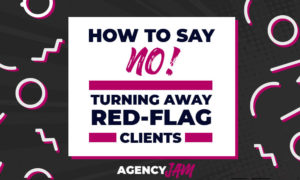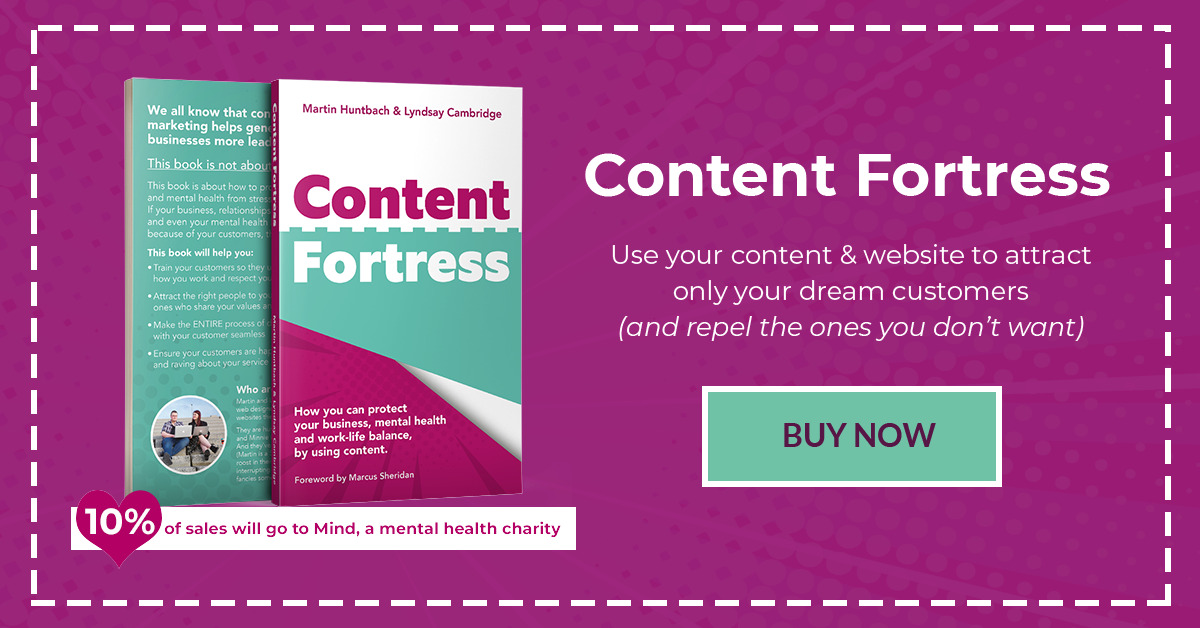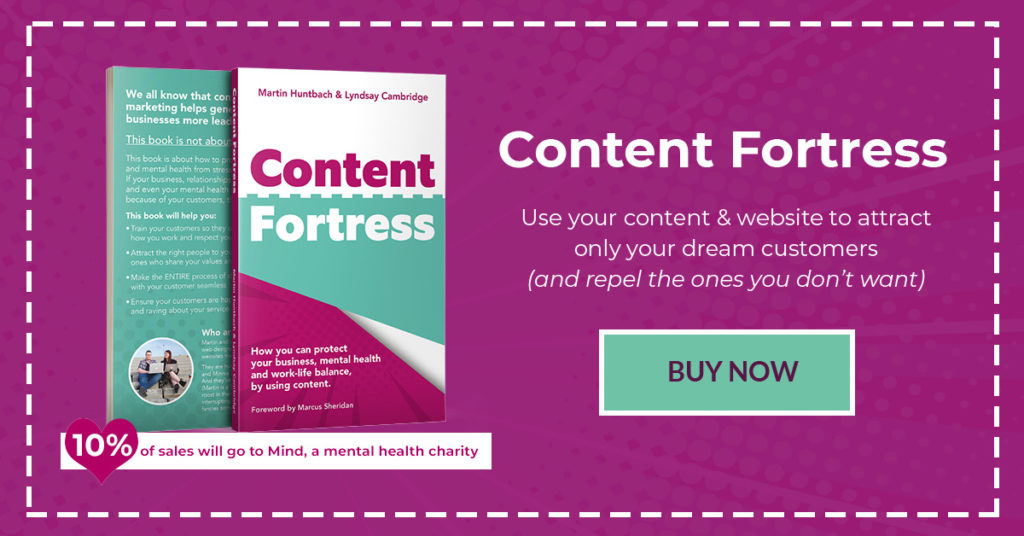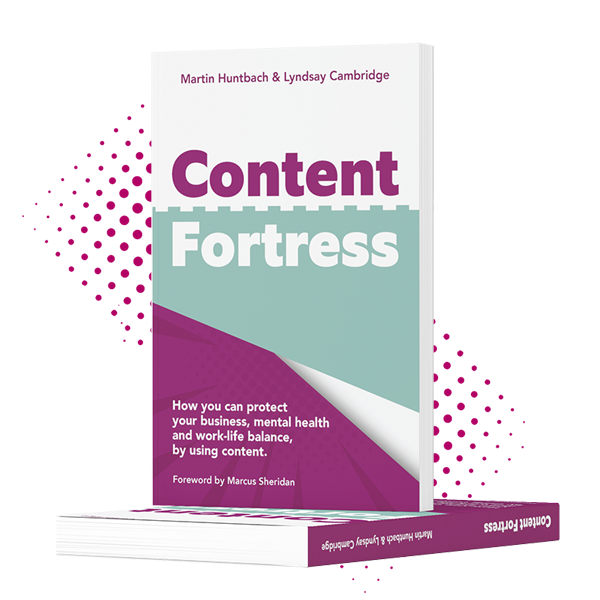Why Every Agency Needs to Create ‘Sales Content’ (and how to do it)
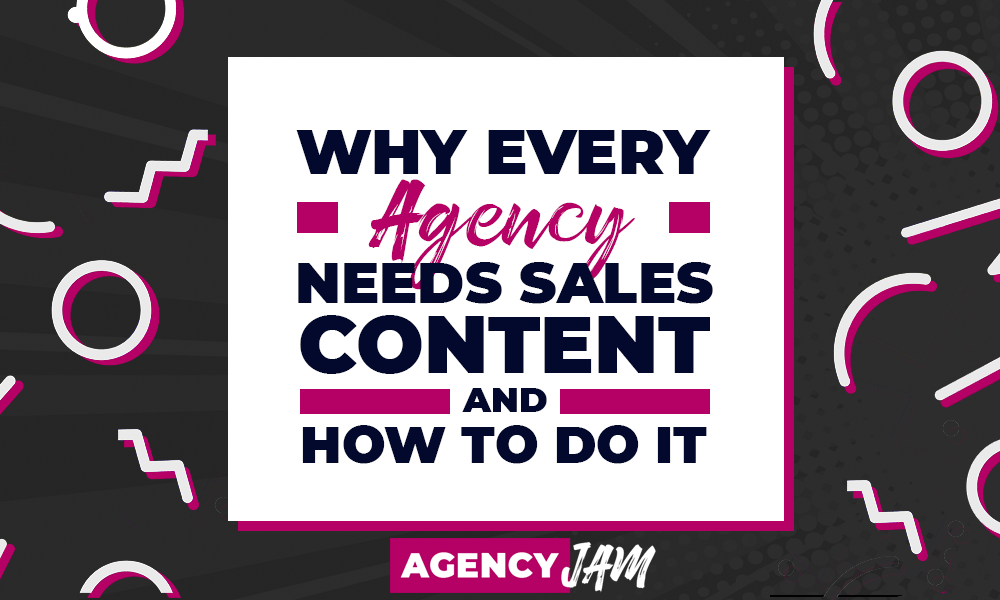
Do you know what I’ve noticed about a lot of web design agencies and freelancers?
They hate selling.
Why?
Well, I’ve heard the phrase ‘I hate being sold too’ banded around a lot.
And if you hate being sold too then it makes complete sense that you don’t want to sell.
Why would you want to do something to someone else, when you hate it done to you, right?
You’re not an arsehole. So you don’t sell. It’s that simple.
But do you know what?
I like being sold too.
And many other people like being sold too.
They just like being sold too in a certain way.
Reframing what we mean by ‘sales’

When we think of sales, we think of that sleazy guy wearing a cheap suit and a fake smile. The guy who will pressure you, cajole you, compliment you and lie to you until he gets your money.
That’s what we think of when we think of sales.
But what about a salesperson who shows you how a product or service can really help solve a problem you’re having? Who answers all your questions honestly and without bias? Who is upfront about their prices? Who will allow you to voice your objections and come up with a solution? Or even say, ‘Hey, maybe this thing isn’t right for you. And that’s okay.’
When I talk about sales, I’m talking about the latter.
I’m talking about being open and transparent with your prospects – giving them all the information they need to make an informed buying decision.
So with that part out of the way, let’s get to the important question – how the hell does this relate to content?
What is sales content?
Sales content is content that directly talks about services. And the aim of this particular kind of content is to sell.
It typically tackles the questions and potential objections you might get on a sales call.
And you might be thinking to yourself? Well, why content? Isn’t it better to leave the selling to the sales call, when you speak to your prospect directly?
What are the benefits of sales content for agencies? (Rather than relying on calls)
There are four reasons why we favour ‘sales content’ over speaking with a prospect directly…
-
- Most people prefer to get the answers to their questions from your website.
We’re sure you’re lovely but actually, your prospects don’t want to talk to you. When you create sales content, you sell without your prospects being ‘deterred’ by having to go on a ‘sales call’ aka ‘a 15-minute chat’.
- Sales content sells on mass
You can only speak to one person at once. Sales content speaks to everyone. You can email it to your list or repurpose it to social media and the content gets everywhere. From one piece of content, we had 5 new web design clients sign up to us in one week – and we’ll talk about how we did that a bit later! - It cuts the communication time with prospective clients
How many ‘15 minutes but actually one-hour’ chats have you had with prospects only for them to ghost you? Sales content cuts down on your communication with prospective clients because when you eventually do speak to them, they’ve already committed to buying from you. They’ve consumed your sales content and already decided to buy. The call is merely a formality at this point just to answer any further questions. - Your competitors don’t do it
Sales content is still rare. If a web design agency or freelancer does invest in content then they don’t usually create ‘sales content’. This is what will differentiate you from your competitors. When you create sales content, prospects will see you as transparent and helpful.
- Most people prefer to get the answers to their questions from your website.
The Buyer’s Journey and Sales Content
Sales content is aimed at people who are ready to invest in a website. They are at the ‘decision stage’ of the buyer’s journey.
For those who aren’t familiar with the buyer’s journey or need a quick refresher, here’s an example buyer’s journey for someone who’s going to invest in a new website.
Awareness Stage Example for a Web Design Prospect
The prospect is attending a conference when someone says to them, ‘oh, you sound great, do you have a website?’ They realise they don’t and that not having a website might turn off potential customers. They’ve made it this far without one, but now is really the time to invest.
Consideration Stage Example for a Web Design Prospect
The prospect begins to research the solutions to their problem. And this takes a lot of research!
They look into building their own website. They research Wix and then WordPress. And they also learn about page builders such as Beaver Builder or Elementor.
They decide that they haven’t got the necessary skills or time or inclination to build their own site. So they start researching about hiring someone to do it for them. Should they hire an agency? Should they hire a freelancer? How much does it cost? How long does it take? What are the things to be aware of?
Decision Stage Example for a Web Design Prospect
After all that research, the prospect has made a decision on what solution path they’re going to follow. For example, they’ve decided to hire a freelance web designer. They’ve ruled out doing it themselves and hiring an agency.
Now, they plan on finding the right freelancer for them, and they start comparing different web designers.
Where does Sales Content Sit in the Buyer’s Journey?
That’s a basic overview and this process can take days, weeks or even months to complete.
Typically agency owners and freelancers create helpful content which only tackles those in the first or second stages of their journey. Think all the helpful ‘how to’ kind of content.
But what sales content does is appeal to people who are at the ‘decision stage’ of the buyer’s journey. It speaks directly to them. So yes, you won’t see as much traffic to sales content. But you’ll certainly see sales!
How Do Web Design Agencies and Freelancers Create Sales Content?
As I said earlier, sales content normally tackles the questions, objections and sticking points that come up on a sales call. Below are three ways you can create sales content, that appeals to people when they’re at the decision stage of the buyer’s journey i.e. they’re comparing you to your competitors!
-
Tackle the objections
Prospective web design clients are like toddlers – they ask why a lot (don’t tell them we said that, okay?)
But it’s easy to understand why they ask why, right?
How bloody confusing is web design!? Prices can vary so much between different agencies or freelancers. As can processes. Timescales. What’s included. Maintenance packages. All sorts of things.
It’s no wonder your prospect is full of questions and potential objections that could prevent them from working with you.
This could be things like…
Why are you more expensive than that other company? Or why do you take so long?
Unfortunately, our prospects don’t just pick up the phone and ask us these questions.
They keep these questions to themselves AND worse, they fill in their own answers.
So when a prospect says to themselves, ‘hmmm why are you more expensive than other companies?’ the answer they’ll come up with will probably be along the lines of ‘because they’re probably ripping me off, that’s why!’
This is where content comes in.
You can create content that tackles your prospects’ objections.
Example of Our Objection Busting Content
Why we charge large businesses & public sector organisations more for website redesign.
On our web design pricing page, we stated that our website packages started from £5000+. But when we spoke to larger companies or public sector organisations we’d usually charge £15,000+.
On a sales call, a prospect from a large company hinted at this, and we explained why we charged large companies much more.
But we realised this could be a potential objection for larger companies, who might think, ‘are they charging me more just because we’re a bigger company and they think we can afford it?’
So we wrote a blog post tackling that issue head-on, and we sent this blog post to larger companies when they got in touch about hiring us. We had a few compliments thanking us for our transparency!
For you, your prospects’ objections could be completely different. If you’re a freelancer, for example, some prospects may question whether you can handle the size of their projects or whether you’re professional or reliable enough.
Yes, we know their thinking is wrong, but it’s our job to put them right. And if this is something you’re particularly struggling with, check out our article on how smaller agencies and freelancers can compete with much larger agencies.
2. Be ultra-transparent about your prices
If there’s one topic we talk about in our content that gets us the most traffic, rankings AND sales…it’s price.
And one of our favourite go-to pieces of content about pricing is the ‘why I’m raising my prices’ piece of content.
Web designers should raise their prices regularly (at least once a year).
The problem is when they do raise their prices they either don’t say anything or simply update their pricing page.
But by talking about why you’re increasing your prices, you actually highlight the benefits of working with you.
The Blog Post That Earned Us £25,000 in One Week
Take our blog post, why we’re increasing our web design prices – we had four new clients within a week of publishing this post. And all of them said that this post was the push they needed to invest in us.
The hook that gets people to read the post is the price increase. People wanted a good nosey. That might be why you just clicked on it right then. People just love to know!
But the majority of the blog post is just selling us. It’s giving our reasons for raising our prices which are all huge benefits to our clients, such as – our projects becoming more time-intensive, investing in better, more expensive software and investing in our own learning.
And these reasons all acted as benefits to working with us.
At the end of the post, we encouraged people to sign up at our current prices before they increased.
Every time you raise your prices you can create this kind of content. It acts as a little nudge to those who are thinking about working with you. Those on the fence are suddenly forced to make a decision to work with you. That’s why it leads to sales.
Finally, if the thought of putting your prices out there publically on your website leaves you in a cold sweat, check out this article from our Jammy Digital site – why you should put your prices on your website.
3. Increase your sales by helping prospects find the right agency/freelancer
One of the biggest issues prospects have when looking for a web designer is finding the right one for them.
There’s so much choice and so many different things to consider. It’s easy to understand why prospects become overwhelmed.
But if you can help guide your prospect, showing them how to find the right web designer for them, then I guarantee you will increase your sales.
Yes, not everyone who follows this advice will be right for you. But the ones who are will appreciate the help and remember you for it.
A good way of doing this is by creating something like the website buyer’s guide. This is usually a free downloadable guide that will help your prospect find the right web designer.
This guide was one of our least popular lead magnets.
And it was also our most profitable lead magnet.
Because it spoke to people at the stage when they were ready to buy a website. The follow-up email sequence was also incredibly helpful too. There was no selling at all here, all just helpful stuff.
One Caveat With Sales Content
We love sales content, but here’s a warning…
It should be used sparingly.
It’s the seasoning. Not the main meal.
This is content talking directly about your services, and that’s great. But not every piece of content you create should be about that. As a maximum, one in five pieces of content you create should be sales content.
Sales content is actually part of a wider content strategy that we go into in our best-selling book, Content Fortress.
Want some more?
Of course you do. Check out these articles...
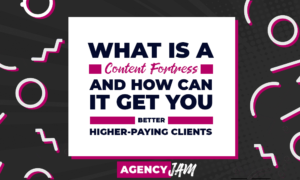
What is a Content Fortress and how can it help your agency get better, higher-paying clients?
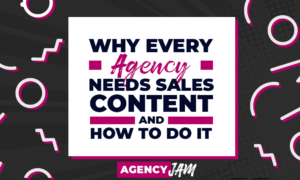
Why Every Agency Needs to Create ‘Sales Content’ (and how to do it)
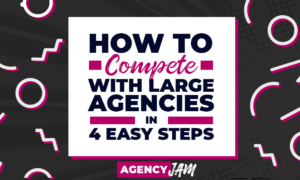
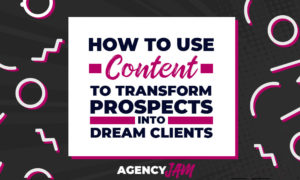
How to Use Content to Transform Prospects into Your Dream Clients
